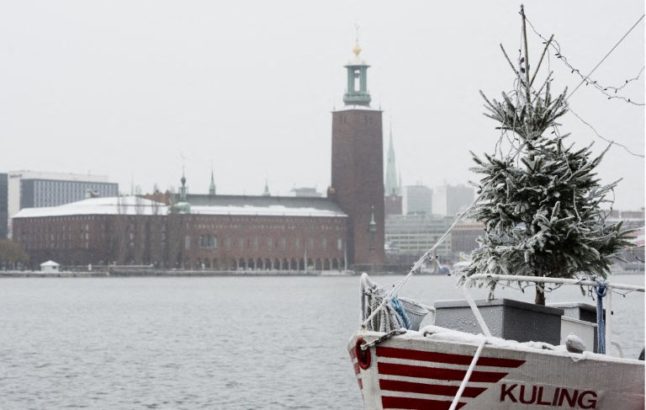Gävle’s Christmas goat, Gävlebocken, has only survived until the New Year 19 times in the 57 years it has been erected in the city, with pranksters managing to set it on fire every other year.
But this year, apparently for the first time, birds are a bigger problem.
The extremely wet weather Sweden suffered in July and August have meant that an unusually large amount of grain has been left on the straw out of which the goat is made, which has now led to a flock of jackdaws pulling the goat apart, with straw tumbling to the ground as a result.
READ ALSO: Gävle’s Christmas goat begins battle against the arsonists
The jackdaws and falling straw have been observed on the web camera the municipality has set up for people who want to follow the goat live, which you can find on The Local’s Goatwatch page.
Anna-Karin Niemann, spokeperson for Gävle Municipality, told the Svenska Dagbladet newspaper that this was almost certainly the first time the goat had suffered from a similar corvid onslaught.
“We have tried to look in the archive and have spoken to people who have worked for a long time in constructing the Gävlebocken,” she said. “But none of them remember this happening before.”
On Thursday, the city’s goat committee held an emergency meeting and decided to let the goat stand, despite the attacking birds and the risk that it will look increasingly threadbare as Christmas approaches.
“It’s about that Christmas spirit, and the goat will continue to spead that Christmas spirit,” Niemann told SvD. “It doesn’t feel right to frighten away birds who are only following their natural instincts and want to have food.”
READ ALSO: The weirdest attacks on Gävle’s Christmas goat
Niklas Aronsson, a communications officer at BirdLife Sverige told the Arbetarbladet newspaper that news of food tended to spread rapidly among jackdaws, which are among the world’s most intelligent birds.
“Some say that they speak to one another but there’s no evidence for that,” he said. “All it takes is for a jackdaw flying over a town to see 40 other birds eating for them to know that there’s food there.”



 Please whitelist us to continue reading.
Please whitelist us to continue reading.
Member comments